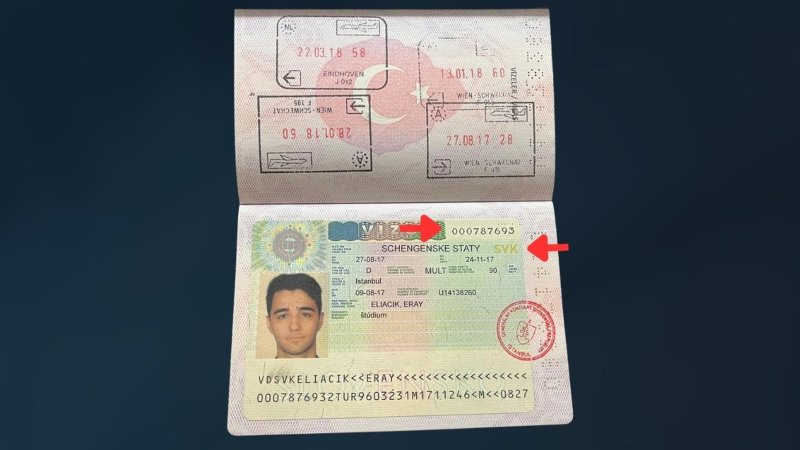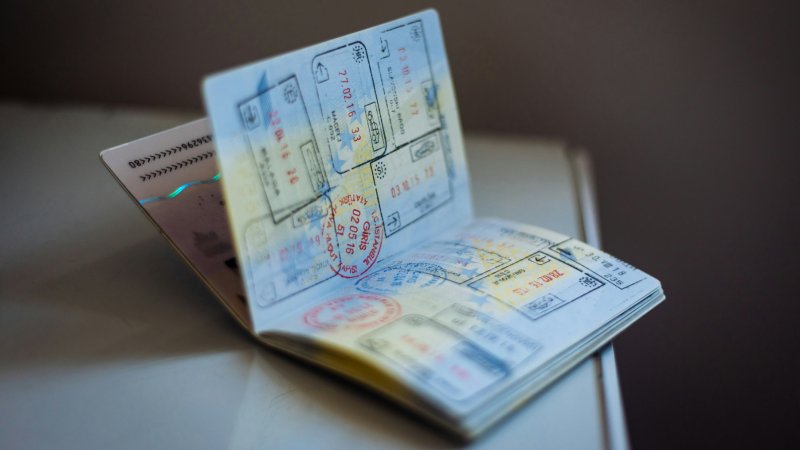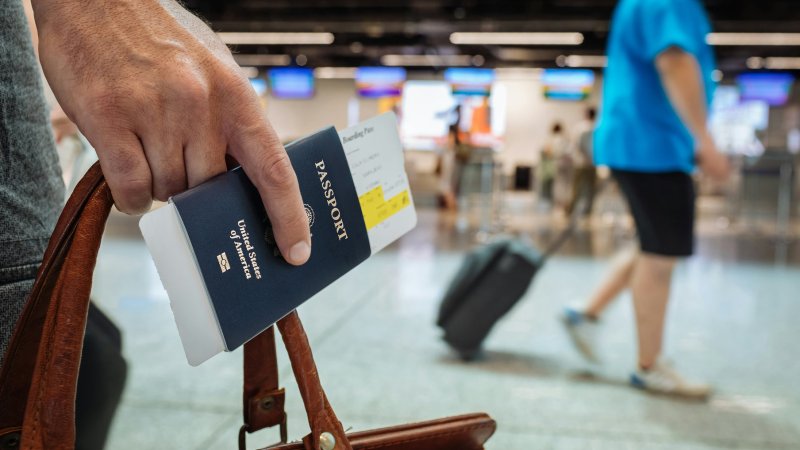When you apply for a Schengen visa, one detail that often creates confusion is the Schengen biometric visa number. Many applicants see this term on forms or during online research and wonder what it means, why it matters, and where to find it. This Schengen visa guide explains the concept in simple language, helping you understand its role in the Schengen visa application process.
What is Schengen biometric visa number?
The Schengen biometric visa number is the unique number printed on your Schengen visa sticker, which is placed inside your passport after your visa is approved.
It is often called the Schengen visa sticker number, and it serves as an identifier that links your visa to your biometric data (fingerprints and photo) stored in the Visa Information System (VIS).
Schengen biometric visa number lets consulates check if your fingerprints are still valid, helps border guards confirm identity, and can save you from giving fingerprints again within the 59-month validity period.
Where is the biometric visa number on a Schengen visa?
The biometric visa number on a Schengen visa is the same as the visa sticker number printed on the visa label inside your passport. Locating your biometric visa number is simple:
Open your passport to the page containing your Schengen visa.
Look at the top right corner of the visa sticker.
You will see a string of letters and numbers. This is your visa sticker number, also known as your Schengen biometric visa number.

The first three letters usually represent the country that issued the visa (e.g., FRA for France, ITA for Italy, DEU for Germany), followed by a unique serial number. For example, if you received a Schengen visa from the Italian consulate, the number might look like ITA987654321.
Role of the Visa Information System (VIS)
VIS is a large EU database used by all Schengen member states to manage short-stay visa applications
Here is what it does:
Stores biometric data: When you first apply for a Schengen visa, you provide fingerprints and a digital photo. These are saved in VIS.
Connects data with your visa: The visa sticker number, often called the biometric visa number, is linked to your fingerprints and personal data.
Supports border checks: At the border, authorities can compare your fingerprints with the records stored under your visa number.
Simplifies repeat applications: If you apply again within 59 months, consulates can reuse your stored biometrics without asking you to give them again.
In short, the Schengen biometric visa number is the bridge between your physical visa and the digital record kept in VIS.

Why the Schengen biometric visa number matters
Many travelers only pay attention to the validity dates on their visa sticker. But the biometric visa number can also be important in several situations:
New visa applications: When applying for another Schengen visa, the application form may ask for the number of your last biometric visa. This helps the consulate locate your stored biometrics in VIS.
Avoiding duplicate biometrics: If your previous fingerprints are still valid, giving the correct visa number may save you from providing them again.
Identity verification: In cases of doubt at border control, officials can use the number to cross-check your biometric data.
Tracking and records: Some consulates use the biometric visa number when responding to applicant inquiries.
Because of this, it is a good idea to keep a record of your most recent Schengen biometric visa number even after your trip.
How long are biometric records valid?
Biometric data stored in VIS does not last forever. According to Schengen rules:
Validity period: Biometric data (fingerprints and photo) remain valid for 59 months (almost five years).
After 59 months: You will need to give fingerprints again when applying for a new visa.
Exceptions: Even within the 59-month period, you may be asked to resubmit biometrics if there are doubts about identity or technical issues retrieving your data.
This is why application forms often ask for the Schengen biometric visa number of your last visa. If you provide the number of a visa issued within the last 59 months, the consulate can confirm whether your biometrics are still valid.

The Schengen biometric visa number may look like a small code in the corner of your visa sticker, but it plays an important role in the visa system. It connects your travel document to your biometric and personal data stored in VIS, making border checks and repeat applications smoother.







